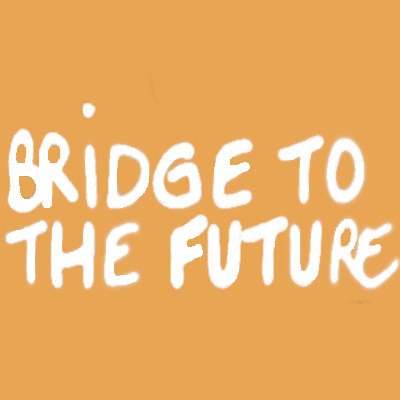Documentary : "Bridge to the Future" / Documental : "Un Puente al Futuro"
Documentary : "Bridge to the Future" / Documental : "Un Puente al Futuro"
This Documentary has been transcribed and subtitled in English, Spanish, French and Russian. To that end, you have to click on the 'CC' button at the bottom, right hand side of the video and select the desired subtitle. You can also activate subtitles in another language, by going into the settings of the video, then clicking on the subtitles section, then choosing the option 'auto-translate' and finally the language of your choice.
The production of a 35 - minute public awareness video entitled: "Bridge to the Future: Indigenous youth document the success of the first delegates of indigenous peoples at the UN" is the product of a collaborative effort of seven Indigenous youth, a professional videographer and Docip, this video compiles sequences of interventions and interviews of the Delegates invited to the 2013 Symposium, archival documents and images of the 1977 and 1981 Conferences, as well as footages shot later by the seven Indigenous youth in their respective home communities.
By bringing together the Elders who participated in the 1977 Conference and using oral history methodology, The Symposium has made it possible to trace the history of this period of struggle. The participation of indigenous youth, responsible for filming and recording the meeting, helped to establish communication between the generations so that they can continue the path that was forged in 1977. Indeed, during the Symposiums, the Elders hoped to pass on a message to indigenous youth, representing the next generation of indigenous rights defenders, for them to continue the tradition of oral transmission to relate not only the experience of those who first came to the UN, but also the struggles of their local communities, thereby pursuing the goal of self-determination in accordance with the spirit and intent of the treaties.
The seven youths (Jacqui Lambert; Morgan Catlett-Ausborn; Judy Kipkenda; Alancay Morales; Haydee Banasen; Wayanay Mamani; Sharni Hooper) were trained in advance in the use of video so that they could themselves collect the memory of the elders during the Symposium, in Geneva and later in their communities. The empowerment of Indigenous Peoples, in particular women and young people, will thus be strengthened while other sectors of their respective countries will become aware of their rights and of the value of their respective cultures.
//
Este documental fue transcrito y subtitulado en español, inglés, francés y ruso. Con este fin, tienen que hacer clic en el botón 'CC' que se encuentra en la parte de abajo, derecha del video y seleccionar el idioma deseado. También pueden activar los subtítulos en otro idioma, y tienen que hacer clic en las opciones del video, después seleccionar la parte de los subtítulos, más adelante escoger la opción de 'traducir automáticamente' y finalmente elegir el idioma de su elección.
La realización de un vídeo de sensibilización de 35 minutos, titulado: Un puente hacia el futuro: la juventud indígena documenta los éxitos de los primeros delegados indígenas en las Naciones Unidas fue posible gracias al trabajo colaborativo entre los siete jóvenes indígenas participantes, un profesional del campo audiovisual y el Docip.
Este vídeo recoge secuencias de intervenciones y entrevistas de los delegados invitados al Simposio de 2013, imágenes y documentos de archivo sobre las conferencias de 1971 y 1981, y secuencias grabadas posteriormente por los siete jóvenes indígenas en sus respectivas comunidades. El Simposio reunía a aquellos ancianos que participaron en la Conferencia de 1977, y el empleo de la metodología de la historia oral ha permitido recordar ese periodo de lucha. La participación de jóvenes indígenas, encargados de grabar y documentar el evento, ha permitido establecer una comunicación entre ambas generaciones para que pudieran seguir la senda abierta en 1977. De esta manera, durante los simposios, los ancianos han transmitido un mensaje a la juventud indígena, es decir, la siguiente generación de defensores de los derechos indígenas, para que esta perpetúe la tradición de la transmisión oral para relatar no solo la experiencia de aquellos y aquellas que acudieron por primera vez a las Naciones Unidas, sino también las luchas de sus comunidades locales y poder cumplir así el objetivo de la autodeterminación, de conformidad con el espíritu y objetivo de los tratados.
Previamente, se instruyó a los siete jóvenes (Jacqui Lambert; Morgan Catlett-Ausborn; Judy Kipkenda; Alancay Morales; Haydee Banasen; Wayanay Mamani; Sharni Hooper) en la utilización de aparatos de vídeo para que ellos mismos pudieran recoger la memoria de sus mayores durante el Simposio, en Ginebra, y posteriormente en sus propias comunidades. De esta manera, se reforzará el empoderamiento de los pueblos indígenas, en especial de las mujeres y los jóvenes, y se sensibilizará a otros sectores de sus países en lo relativo a sus derechos y al valor intrínseco de sus culturas.
United Nations, Geneva
Rapid City, USA
Baguio City, Philippines
Altiplano, Bolivia
Alaska
Térraba, Costa Rica

